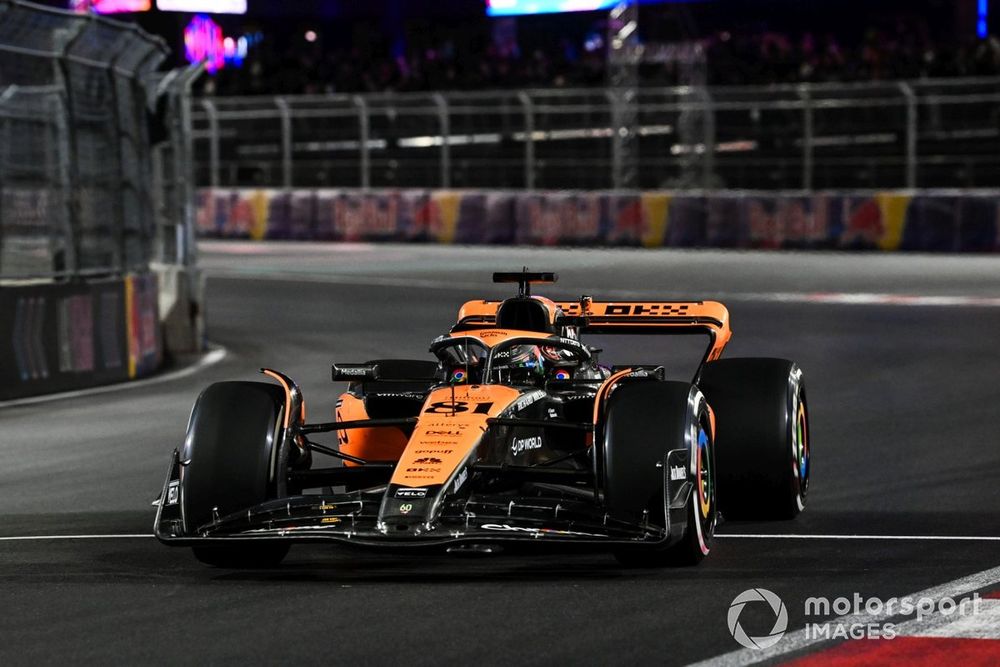The Woking-based squad has made huge gains with its MCL60 this season to emerge as one of the most consistent challengers to Red Bull over the second half of the campaign.
However, a more challenging time at last weekend’s Las Vegas Grand Prix has highlighted that its rivals seem better prepared in low downforce configuration.
And, with the calendar featuring a growing number of circuits where such high-speed demands are required, it means McLaren cannot afford to ignore this development avenue.
McLaren team boss Andrea Stella has admitted all the outfit’s data pointed to his team losing out much more in low downforce trim than the opposition.
“We seem to lose competitiveness when we need to run the car at this drag level,” he said.
“We do see, when it comes to our own observations, the fact that the aerodynamics kind of tends to switch off.
“I’m sure that’s the same for everyone, but it’s more about how large this phenomenon is – and it would look like it is slightly higher for our car than for some of our competitors.”
Photo by: Mark Sutton / Motorsport Images
Oscar Piastri, McLaren MCL60
Stella said that the emergence of high-speed street tracks like Baku and Vegas meant that ignoring low downforce performance was no longer an option for teams.
“While we continue with the development at the medium/high downforce with what we have done this year, we have definitely added quite a lot of work at low downforce and we want to go prepared to these circuits,” he said.
“Now with Baku, with Vegas, Monza, and Spa, it starts to become a decent number of races for which you do have to have an optimised car.
“In the past, it was only Spa/Monza. So now we have added a few more races, it’s a priority.”
Stella explained that cars’ aerodynamics become quite sensitive at low downforce levels because of the impact the lower front wing levels have on the wake around the front wheels – which is critical to car performance.
“When you go for a low rear wing, you go with a low front wing [for balance reasons], and very often this influences both ends because, when you reduce the load on the front wing, you reduce control of the front wheel wake,” he said.
“That affects then the behaviour of the car.
“So rather than simply losing [downforce] linearly, there’s a point in which you lose more than linearly. And that’s what you would like to bring back to kind of…
Click Here to Read the Full Original Article at Autosport.com – Formula 1 – Stories…

